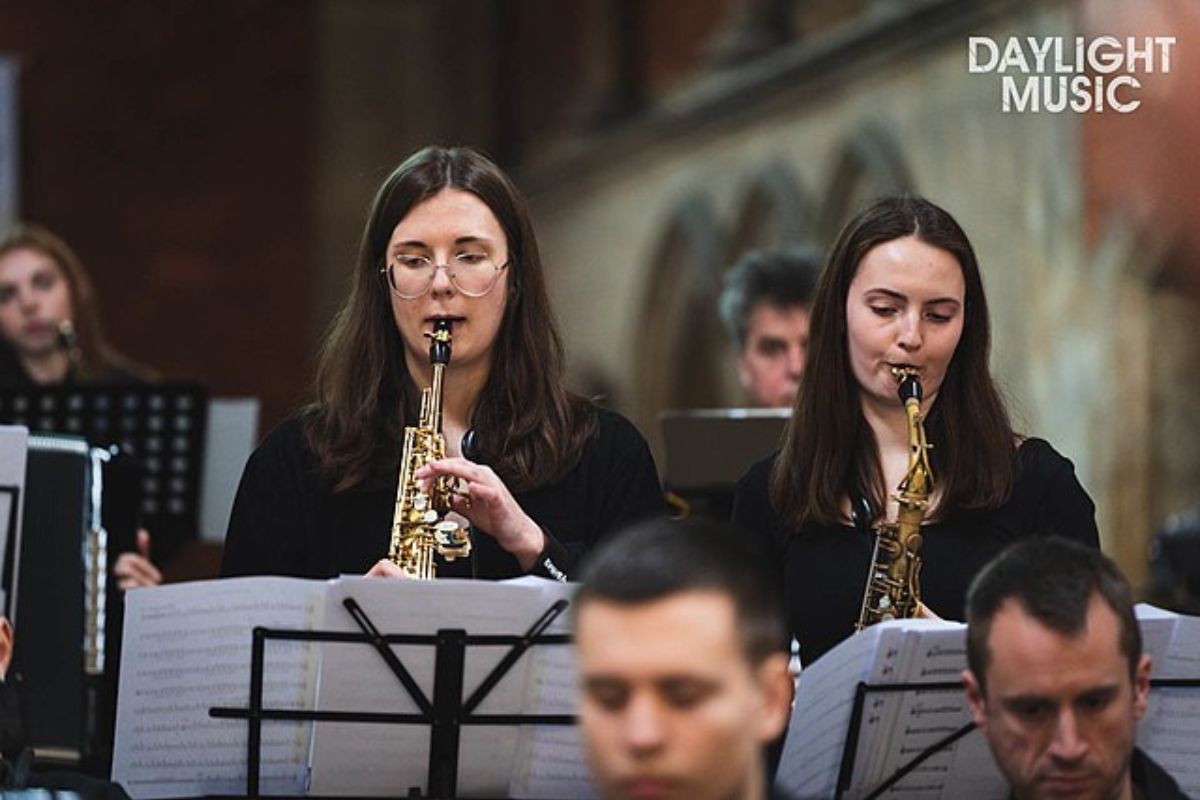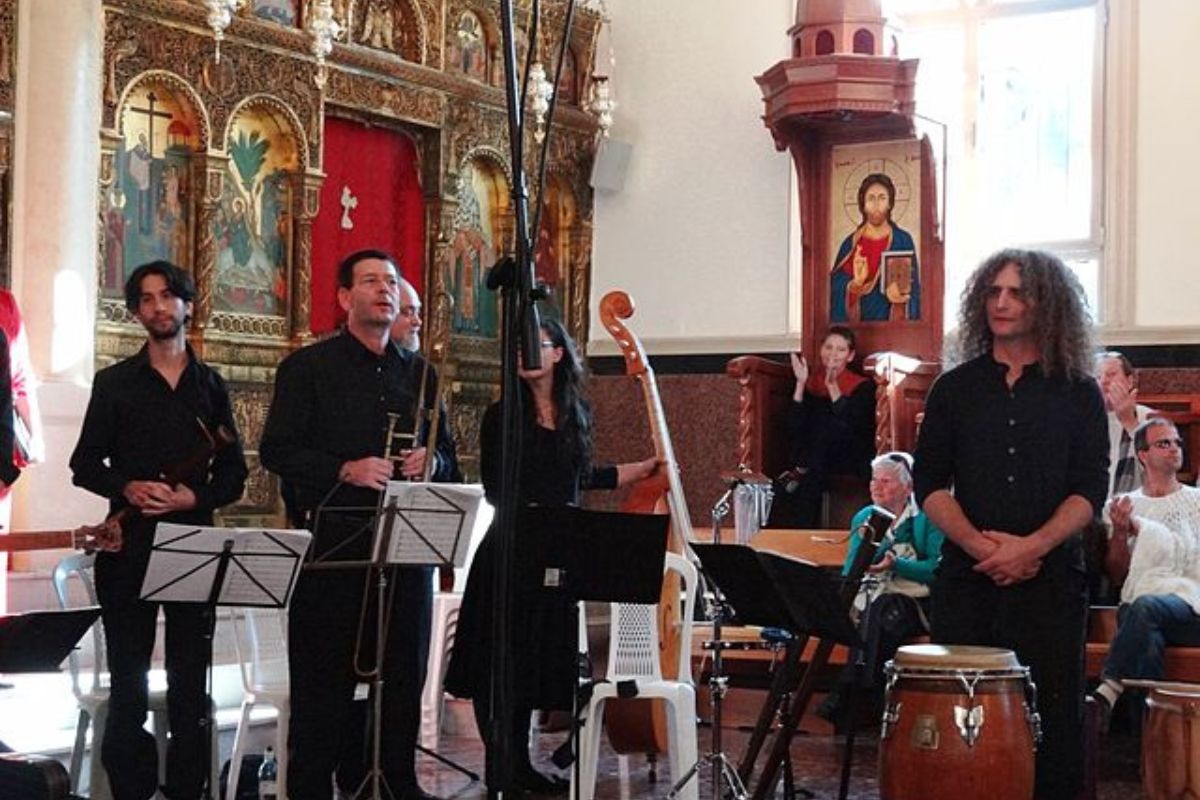Have they ever been swept away by the mesmerizing synchrony of a Broadway chorus line or the harmonious backdrop in an opera? Behind that captivating allure is a dedicated group of performers collectively known as the ensemble. But who are they, and what roles do they play in transforming our favorite shows into unforgettable experiences?
What is an ensemble? An ensemble is a collective term for the group of performers who aren’t the principal actors but instead provide the depth, diversity, and vibrancy that brings a theater performance to life. They’re the unsung heroes, swiftly transitioning between characters, dancing, and singing to immerse you in the world of the show fully.
What are the types of ensembles?
An ensemble is a collection of people who regularly play musical instruments on different occasions and perform a specific musical composition together. There are several types of ensembles based on the music they play, the instruments they utilize in their performances, and the number of artists performing together.

- Orchestra: An orchestra is a collection of 25 to more than 100 musicians. They comprise various instrument sections: string, woodwind, brass, and percussion. Orchestras are classified into Chamber, Symphony, and Philharmonic orchestras.
- Duet: Even though a duet is a piece of music performed by only two musicians, it is nevertheless regarded as an ensemble.
- Trio: A trio consists of three musicians. They might be made up of many instrument configurations. The most common trio arrangement is the Piano Trio.
- Quartet: A quartet is a group of four musicians playing or singing together. You can have different variations of instruments in a quartet. The most popular are the string quartet and the piano quartet.
- Quintet: A quintet is a group made up of five people. It is frequently connected with musical ensembles such as a string quintet or a group of five singers. However, it can be used in any situation where five identical or related objects are regarded as single entities.
- Concert band: A concert band is a band that performs in a specific place and is led by a conductor. A concert band can comprise a variety of instruments. However, the most common ones include saxophones, trumpets, trombones, oboes, tubas, clarinets, euphoniums, flutes, and percussion instruments.
- Jazz ensemble: Jazz bands are a popular type of large ensemble. Of course, a jazz band will play jazz music, but this huge ensemble is identified by its sections rather than by the style of music played. The rhythm section of a jazz band is usually composed of a guitar, a piano, a tuba, and some percussion.
- Marching band: A marching band is technically a type of concert band, but it differs in that the marching band ensemble performs on its feet. It is usually headed by a drum major (you will usually see the drum major holding a baton).
- Symphony Orchestra (Philharmonic): The third huge ensemble we’ll look at today is the symphony orchestra, sometimes confused with the philharmonic orchestra, though there is a distinction between the two.
- Octet: The largest of the small groups, an octet is an 8-piece musical group (vocal, instrumental, or both). This could be to perform a work intended for eight instruments.
- Septet: A septet has seven musicians, whereas an octet has exactly eight musicians. As a result, a septet will often perform work created for seven instruments, such as Beethoven’s Septet in E-Flat Major.
- Sextet: Because a septet contains seven musicians, you can deduce that a sextet has six musicians and, thus six instruments.
AKAI Professional MPK Mini MK3

AKAI Professional MPK Mini MK3
What does an ensemble member do?
The ensemble member’s role is often misunderstood, but it’s critical to the overall success of a production. Now, let’s shed some light on this. An ensemble member in musical theater or opera is the ultimate chameleon. They must rapidly switch between costumes and identities, embodying multiple characters throughout the show.
This could be a crowd member in one scene, a merchant in another, and perhaps even a creature from the underworld in the next. This series of characters and their associated actions are referred to as their “track.” But let’s break that down a bit more.
The “track” of an ensemble member encompasses all the characters they’ll embody, the lines they’ll deliver, the blocking they must memorize (that’s the exact positioning and movement of actors on stage), the dance choreography they’ll perform, the props they handle, and even their traffic backstage. It’s a whirlwind of information that an ensemble member has to learn and flawlessly execute.
What special positions exist within a theatrical ensemble?
No ensemble is complete without a few specialists, and there are three positions that you might not be aware of: the dance captain, the understudy, and the swing.
Dance captain
The dance captain is like the guardian of the show’s choreography. They’re responsible for bringing new actors up to speed, leading routine dance rehearsals after the show opens, and documenting the show’s blocking and choreography in a book known as the “show bible”. This is no ordinary book – it’s a sacred guide that ensures the show goes on, no matter what.
Understudy
The understudy is perhaps the most prominent role outside the theater industry. An understudy learns one of the principal roles in addition to their ensemble track, ready to take center stage at a moment’s notice. It’s a demanding role, but imagine the thrill when they suddenly get to shine in the spotlight!
Swings
A swing is a super-understudy, learning every male or female ensemble track and stepping in for whoever’s missing that night. It’s a tough gig, requiring excellent memory, versatility, and compartmentalization skills.

How do ensemble members cultivate their skills?
Just as a samurai sharpens his sword, an ensemble member must continually hone their skills in singing, dancing, and acting. They’re not born with these skills; they develop them through years of hard work and dedication. But let’s explore how they do it.
Essential skills for an ensemble member
- Dance is a primary skill for most ensemble members, and they dedicate time to practice and develop their dancing abilities.
- Singing is another essential aspect of being a triple threat. Ensemble performers take voice lessons, establish warm-up routines, and prepare a diverse range of materials for auditions.
- Vocal confidence and the ability to convey character through song are crucial for ensemble members to shine on stage truly. Think of Idina Menzel’s powerful performance of “Defying Gravity” in Wicked as an example of a triple threat showcasing their vocal skills.
What are the advantages and disadvantages of being an ensemble member?
The comparison between the roles of an ensemble member and a home studio producer can lead us to evaluate the pros and cons of each position.
Advantages
Let’s first look at the sunny side of being an ensemble member:
- Consistent work schedule: Ensemble members usually have a fixed work schedule with consistent hours.
- Teamwork: Working as part of a group can be rewarding and lead to lasting friendships.
- Performance satisfaction: There’s nothing quite like the immediate feedback of a live audience.
- Versatility: The skills developed as an ensemble member are transferable to various roles within the performing arts sector.
Disadvantages
While there are many advantages, let’s be fair and consider some potential downsides:
- Physical demands: The role requires significant physical fitness and can be demanding.
- Less creative control: Ensemble members usually have to follow directions rather than create their own artistic interpretations.
- Income stability: Work can be inconsistent, depending on the success of the show and the number of shows being performed.
- Typecasting: Ensemble members can sometimes get pigeonholed into specific roles or styles.
With these pros and cons, aspiring performers and producers can make more informed decisions about their career paths. Remember, there’s no right or wrong choice here – it’s about finding what suits your passion, skills, and lifestyle.
Frequently asked questions (FAQ)
Let’s tackle some common questions that pop up when discussing the roles of ensemble members and home studio producers.
How much technical knowledge does a home studio producer need?
In the age of technology, it’s crucial for a home studio producer to have a good grip on audio equipment, software, and digital platforms. While you don’t need to be an electrical engineer, understanding the basics of sound recording, mixing, and mastering can make a world of difference in the quality of your productions.
Do ensemble members need to play musical instruments?
While it’s not a strict requirement, being able to play a musical instrument can greatly benefit an ensemble member. Not only does it enhance musical understanding and improve sight-reading skills, but it can also open up opportunities for more versatile roles within a production.
Can I start a home recording studio with a limited budget?
Absolutely! While having top-of-the-line equipment can enhance the quality of your sound, it’s not necessary to break the bank when starting. Many successful producers started with a simple setup, gradually upgrading as their skills and needs evolved. Focus on learning the craft and investing wisely in the basics first.
Conclusion
So, there you have it, folks! Whether you’re set to hit the high notes on stage or drop the bass in your home studio, it’s all music to our ears! We’ve tuned into the similarities and differences between being an ensemble member and a home studio producer.
Did I cover everything you wanted to know? Let me know in the comments section below. (I read and reply to every comment). If you found this article helpful, share it with a friend, and check out my full blog for more tips and tricks on music production and performance. Thanks for reading, and until next time, keep those good vibes flowing!
Key takeaways
This article covered the roles and requirements of ensemble members and home studio producers in the music industry. Here are some key takeaways:
- Ensemble members need skills like singing, dancing, and acting, while home studio producers need technical skills related to sound recording and production.
- Each role has its unique set of advantages and disadvantages, which can impact your decision on which path to take.
- Technical understanding of audio equipment and software is crucial for home studio producers.
- Instrumental skills can enhance an ensemble member’s versatility in production.
- It’s possible to start a home recording studio on a budget, with a focus on learning and gradual upgrading of equipment.















